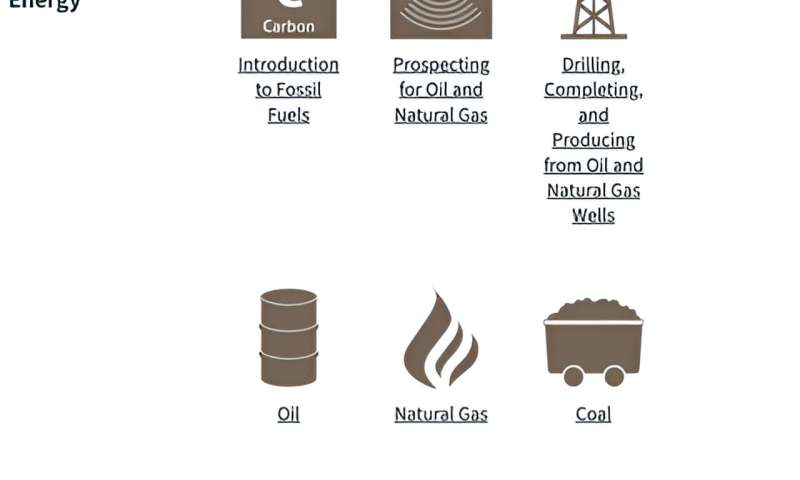Stanford launches free website for public to learn about more than 30 energy topics

Have questions about electric vehicles, hydrogen, gasoline prices or any other energy topic? Stanford University's new Understand Energy Learning Hub website can help anyone find answers on more than 30 energy topics in an easy-to-navigate format.
Open to the public, the website shares content from Stanford's Understand Energy course, which has been taught every fall term for decades through the Department of Civil & Environmental Engineering. Due to increased interest in energy topics, the instructors began teaching the course during spring term, too, in 2016.
That same year, the course began running during summer term, primarily for high school students and international undergraduate students. In total, hundreds of students take the course every year.
The sustainability, affordability and security of energy are the topics of much debate, research, and public and private spending around the world. Energy, which is behind approximately three-fourths of global greenhouse gas emissions, is a complex subject.
"The goal of the Understand Energy Learning Hub is to demystify energy a little or a lot for, hopefully, millions of people over time," said Jane Woodward, MS, MBA, one of the instructors of the Understand Energy course and of the entrepreneurial Stanford Climate Ventures course. Woodward is also a member of the advisory council for the Precourt Institute for Energy, which houses the course and built the website.
"Not everyone works in the energy sector, but we all use energy," said Woodward, who co-founded two energy investment firms. "Everyone can come to understand complex energy resource, security, cost, and environmental impact issues. People can contribute knowledgeably to debates and decision making. We can appreciate the amazing technology advances today and make informed energy decisions in our lives."
The Learning Hub's visitors can explore the energy subject areas that interest them. The website covers topics from gasoline to the grid. Each topic offers a variety of content, including a Fast Facts summary of key information, a curated list of third-party videos and readings, and a recent video of the topic's Stanford course lecture.
"The Learning Hub staff have made it easy for users to find what they're looking for and in the format they like, whether that's text, graphics or videos," said Diana Gragg, Ph.D., the primary instructor of the course, as well as managing director of the Precourt Institute's program to engage and advise Stanford students, Explore Energy.
"Besides digging into specific topics, like geothermal energy or global energy access, users can gain a big picture view through two overview topics, Energy Basics and The Unfolding Energy Revolution," said Gragg. "Things are moving quickly in energy today, so we will update topic contents every six to 12 months to keep the information current."
Website structure
The topics are grouped by primary sources, like fossil fuels and renewables; secondary sources, like electricity and natural gas; energy services, like transportation; and tools to manage our energy systems, like energy storage and energy policy.
"We also built a handy infographics page that covers the current energy landscape and contains much macro data for the United States and the world," said Sharon Poore, BS, manager of the Learning Hub. "We provide links to the instructor's favorite resources for data, too, like the EPA's Greenhouse Gas Equivalencies Calculator, as well as favorite news sites, podcasts and conferences."
The Understand Energy Learning Hub is meant to help people build their energy literacy at their own pace, or just be a quick source of needed information. The course lectures deliver up-to-date content in an upbeat way. The pre-lecture homework is divided into "essential" and "optional and useful" videos and readings, most of which are brief.
"The course content is designed to be more than just conceptual. It's meant to bring concepts to life to empower students to apply what they learn to the real world in their personal, professional, and social lives," said the course's third instructor, Kirsten Stasio, MBA/MS. Stasio is also the chief executive officer of the Nevada Clean Energy Fund.
A number of the lectures on the Learning Hub are delivered by guests who are experts and practitioners in their field. In addition to several Stanford faculty such as David Freyberg and Sally Benson, these guest lecturers include Tim Latimer, MBA/MS, chief executive officer of the geothermal energy startup Fervo Energy; Clea Kolster, partner and head of science at Lowercarbon Capital; and Peter Rumsey, chief executive officer and founder of Point Energy Innovations.
Presentation slides from the recorded lecture are available upon request. The hub staff are also producing short videos with key highlights from most lecture videos. Two topics—nuclear fission and wind power—already have a "10-Minute Take" video. Additional topics will have them soon.
Provided by Stanford University